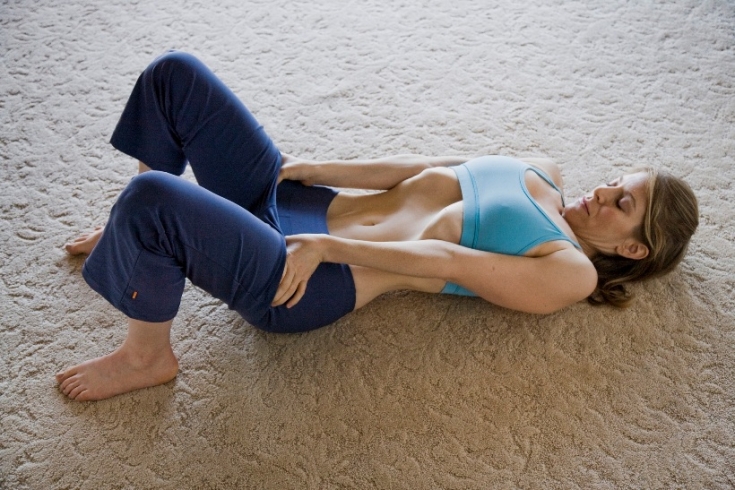Smooth posture, flat stomach and thin waist – these are signs of health and beauty. Achieving such a result is quite realistic, if not dreaming while sitting on the couch, but acting. The "vacuum" technique will help you lose extra pounds, strengthen your lower back, and also adjust your waist.
Taken from yoga, it includes the transverse abdominal muscle, which is the most capricious, because due to lack of physical activity, it weakens and stretches. With how to master the exercises, will acquaint you with the Internet edition estet-portal.com.
- "Vacuum": what is its essence and why it should be done
- When to use "vacuum" not allowed
- Technique for performing the exercise from "A" to "I"
"Vacuum": what is its essence and why it should be done
"Vacuum" – it is, in essence, an exercise for the abdomen. It is not as popular as a press or stretch, but boasts of its effectiveness and usefulness. The fact is that it involves the transverse abdominal muscle, which, even with the swing of the lower and upper press, continues to be “lazy”.
This tissue, located under the rectus and oblique muscles, serves as a kind of corset that, when tensed, supports the spine, the entire peritoneum and internal organs. In addition, this "belt" takes part in such important physiological processes as childbirth, urination and defecation.
The essence of – working out the transverse abdominal muscle in order to give it elasticity and tone.
If the transverse muscle is not trained, it will weaken and stretch. Hence, there is such a problem as "bulging" belly, which affects even thin people. And exercise eradicates this defect. Regular training tones and tightens the transverse muscle, resulting in a flat stomach and a visually narrower waist.
Other positive changes are observed:
• Lower load is relieved;
• back pain stops;
• blood circulation improves;
• stagnation disappears.
When to resort to "vacuum" can't
Before you start training, you need to familiarize yourself with the contraindications. This will save you from serious consequences.
You shouldn't exercise if:
• gastritis;
• stomach and duodenal ulcer;
• pancreatitis;
• disease of the biliary tract;
• colitis;
• dysbacteriosis;
• heart failure;
• exacerbation of a chronic disease in the abdominal and pelvic region;
• menstruation;
• pregnancy;
• full <
Also, the exercise should not be done after surgery performed in the abdomen or pelvis.
It is quite possible to master the technique of the exercise at home. To do this, you only need a few minutes of free time.
Belly Workout
has several variations:• lying on your back;• on all fours;• sitting;
• standing.
Like any technique, start mastering the "vacuum" according to the principle "from simple to complex". The easiest option is to perform the exercise in the supine position, and the most difficult – standing.

breath-hold time from 15 seconds to 1 minute.

It is better to train in the morning and always on an empty stomach! If you start exercising on a full stomach, there will be no sense.


Try to do abdominal exercises
throughout the day, not just in the morning or afternoon. Train wherever you can: sitting at work, standing outside, or lying on the couch at home. Just control your muscles, and over time, pulling in your stomach will become a habit. The result will not make you wait long: after 2 months your stomach will become noticeably taut, and your waist – thin. So, take note of all the above exercises and make your figure attractive.Read also: Yoga in hammocks: spiritual and physical practices at height
Together with the exercise "Vacuum" do exercises on the press, as in our video!








Add a comment